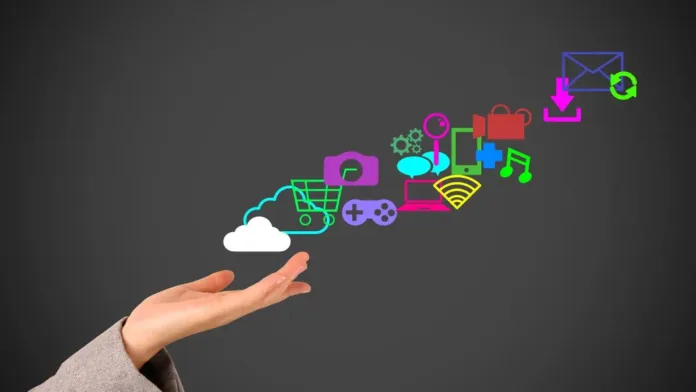Title: “”
Introduction:
In the ever-evolving landscape of business marketing, it has become increasingly critical for businesses to embrace innovative and non-traditional marketing strategies in order to stay ahead of the competition. In this detailed article, we will delve into the reasons why traditional marketing strategies may no longer be sufficient and explore various non-traditional methods that can unlock untapped potential for businesses. Some of these strategies may include:
– Social Media Marketing: Leveraging platforms such as Facebook, Twitter, Instagram, and LinkedIn to engage with potential customers and create a strong online presence.
– Content Marketing: Creating high-quality, informative, and engaging content to attract and retain a loyal audience.
– Search Engine Optimization (SEO): Optimizing a business’s website to rank higher on search engine results pages, increasing organic traffic and ultimately, potential customers.
- Influencer Marketing: Partnering with industry influencers or celebrities to promote products or services to their large followings.
– Email Marketing: Building a database of subscribers and regularly sending them targeted, relevant, and valuable content to foster customer engagement and loyalty.
– Video Marketing: Producing and distributing short, engaging, and shareable videos to connect with a broader audience and engage on a more personal level.
– Public Relations: Establishing relationships with journalists, bloggers, and other influential sources to secure brand coverage and reach new audiences.
By examining the benefits and challenges of adopting non-traditional marketing strategies, we will provide a comprehensive guide to help businesses navigate the complex world of marketing and ultimately, skyrocket their success.
Table of Contents
- 1. Harnessing the Benefits of Non-Traditional Marketing Strategies: A Comprehensive Analysis
- “`
- Q&A
- Wrapping Up

1. Harnessing the Benefits of Non-Traditional Marketing Strategies: A Comprehensive Analysis
In the modern era of digital marketing, it is evident that traditional techniques no longer hold the same significant weight in reaching and engaging with target audiences. With the rapid growth of social media platforms, email marketing, and search engine optimization, non-traditional marketing strategies have emerged as powerful tools for businesses of all sizes. In this post, we will discuss the benefits of embracing these non-traditional methods and conduct a comprehensive analysis to understand their potential.
Firstly, let’s acknowledge some of the traditional marketing methods that have long been a staple of business marketing strategies: advertising, direct mail, and telemarketing. While these methods still play a role in today’s marketing landscape, they are increasingly being overshadowed by non-traditional approaches. Some reasons for this shift include increased competition, lower response rates, and the desire for unique content that resonates with consumers on a personal level.
In the age of digital marketing, non-traditional methods such as content marketing, search engine optimization (SEO), social media marketing, email marketing, influencer marketing, and paid social media advertising have become essential components of any successful marketing campaign. For instance:
– **Content marketing:** This approach focuses on creating quality, informative, and engaging content that appeals to a particular audience segment. By producing valuable content, businesses can attract and retain customers, ultimately establishing themselves as thought leaders in their niche.
– **SEO:** By optimizing a business’s website for search engines, non-traditional SEO strategies can help drive organic traffic and increase the visibility of a company on search engine results pages. This can lead to a steady stream of leads and potential customers.
– **Social media marketing:** Through the use of platforms like Facebook, Instagram, and Twitter, businesses can reach and engage with their target audience in a personal and interactive manner. By participating in conversations, sharing content, and responding to customer inquiries, businesses can build trust and loyalty among potential customers.
In conclusion, non-traditional marketing strategies offer a unique opportunity for businesses to engage with their audience in a personal and effective manner. By focusing on content creation, SEO, and social media marketing, businesses can reach, engage, and retain customers in a way that traditional methods may struggle to achieve. As the digital landscape continues to evolve, it is crucial for businesses to adapt and harness the benefits of these non-traditional marketing techniques to stay ahead in the competition.
“`
The rise of the new emerging economies has had a significant impact on global trade, making it more complex and competitive than ever before. Several factors contribute to this transformation, including demographic shifts, economic growth, technological advancements, and changing consumer preferences. As countries such as India, Brazil, and China have embarked on their “great escape” from poverty, they have also become powerful drivers of innovation and economic expansion. This article aims to explore the key drivers behind this phenomenon and its implications for the global economy.
Some of the primary factors fueling the growth of emerging economies include:
- Demographics: The rapid growth in the working-age population in countries like India and China has created a large and skilled labor force. This influx of labor has contributed to a rise in productivity and a higher demand for goods and services.
- Economic policies: Many emerging economies have implemented policies that foster economic growth, such as infrastructure development, education reforms, and improved governance. These initiatives have facilitated increased investment, allowing businesses to thrive and expand their operations.
- Technology: The rapid adoption of digital technologies – particularly in countries like India – has enabled businesses to become more efficient and cost-competitive. This has contributed to an expansion of domestic production, thereby boosting trade and investment within the countries.
- Global supply chains: As emerging economies have become more integrated into global supply chains, they have been able to tap into new markets and access advanced technology. This has allowed them to export a wider variety of goods and services, further driving economic growth.
The rise of the emerging economies presents both opportunities and challenges for the global economy. On the one hand, it offers a vast market for goods and services, creating new avenues for businesses to expand their customer base. On the other hand, it places significant pressure on developed countries to adapt to new competitors and uphold their economic dominance. As the world reconciles itself to this changing economic landscape, policymakers must adopt strategies that foster collaboration and cooperation, ensuring a more equitable and sustainable economic future.
Q&A
**Question:** What are some examples of non-traditional marketing strategies businesses can employ to enhance their brand and reach customers more effectively?
**Answer:** Non-traditional marketing strategies, also known as alternative marketing, are approaching marketing in a more unconventional manner, often focusing on innovation and creativity over the conventional tactics of advertising and promotions. These strategies help businesses to break through the clutter and connect with their target audience in a unique way. Some examples of non-traditional marketing strategies include:
1. Content marketing: This approach focuses on creating high-quality, informative, and engaging content to attract and retain customers. It can include blog posts, articles, videos, podcasts, and social media posts. Content marketing allows businesses to share their expertise and establish themselves as thought leaders in their industry.
2. Influencer marketing: This strategy leverage the reach and credibility of social media influencers, bloggers, or vloggers to promote a brand or product. Influencers often have a large following and can generate genuine, trustworthy reviews and endorsements, which can result in increased brand awareness and customer trust.
3. Guerrilla marketing: This technique, developed by Jay Conrad Levinson in the 1980s, involves unconventional marketing stunts or activities to create a buzz around a product or service. Guerrilla marketing can include street theater, hidden cameras, or even creating a viral video that goes viral.
4. Social media marketing: This involves using social media platforms to connect with customers and promote products or services. Social media marketing can include managing a business’s social media presence, creating engaging content, running contests or giveaways, and engaging in conversations with followers.
5. Search engine optimization (SEO): This strategy focuses on optimizing a website to rank higher on search engine result pages, increasing brand visibility and driving organic traffic. SEO may involve on-page optimization, focus on target keywords, creating high-quality content, and building backlinks from other websites.
6. Viral marketing: Viral marketingfocuses on creating content that spreads quickly and easily through social media platforms, often involving humorous, engaging, or shareable elements. A successful viral marketing campaign can amplify a brand’s message and reach a much wider audience than traditional advertising.
7. Meme marketing: Similar to viral marketing, meme marketing involves using the power of memes to spread a brand’s message or product. This can be achieved by creating original memes or repurposing existing ones to feature a product or service.
These non-traditional marketing strategies offer businesses a fresh perspective on promoting their brand and reaching customers in new and innovative ways. By leveraging the power of content, influencers, guerrilla tactics, social media, search engine optimization, and more, these approaches allow businesses to break through the clutter and stand out from the competition.
Wrapping Up
In conclusion, the article has broadly outlined the revolutionary changes occurring within the marketing landscape, as businesses across every industry are increasingly embracing non-traditional strategies. By focusing on new technologies, user experiences, and engaging content, marketers are able to reach and connect with their target audiences in ways that were previously unattainable.
As the digital age continues to progress, the importance of staying adaptable and innovative becomes ever more crucial for businesses. By being open to exploring and implementing non-traditional marketing techniques, organizations can not only keep up with the ever-changing demands of their customers but also gain a competitive edge in the highly saturated marketplace.
Moreover, as highlighted throughout the article, there are numerous benefits to embracing non-traditional marketing strategies, including increased brand awareness, cost-effective marketing, and a heightened level of customer engagement. With these advantages in mind, it would be wise for marketers to reconsider their strategies and adopt a more progressive and innovative mindset.
In the rapidly evolving world of marketing, “Why Not Marketing” has undoubtedly become a rallying cry for forward-thinking businesses. As we move into an era defined by technology and exponential change, marketers who are willing to adapt and think creatively will be those who not only survive but also thrive. It is up to those at the forefront of this digital revolution to seize the opportunities presented by non-traditional strategies and lead the charge towards a data-driven, customer-centric future.
Thank you for joining us on this journey exploring the power of non-traditional marketing strategies. As we embark on the next chapter of this digital revolution, let us continue to challenge the status quo and strive to make marketing more relevant, engaging, and impactful for all.
